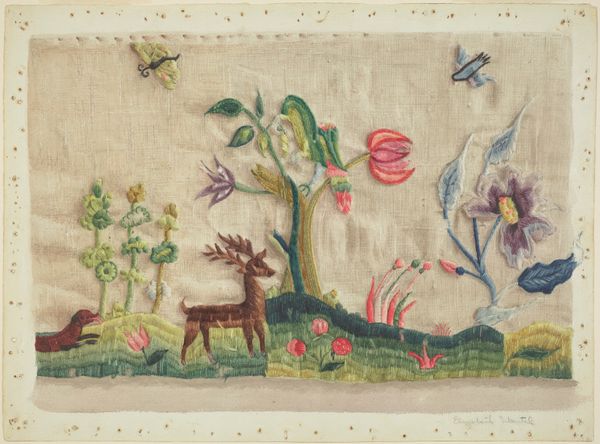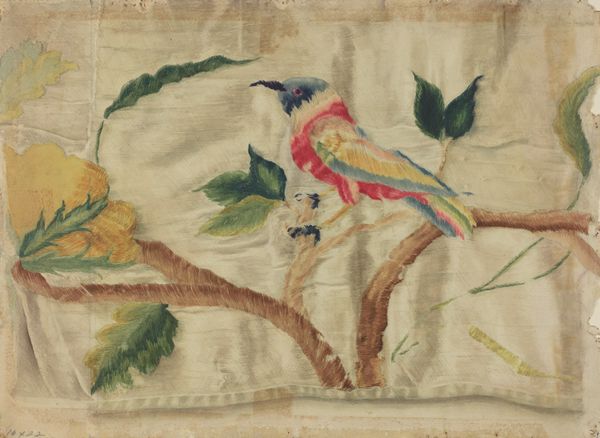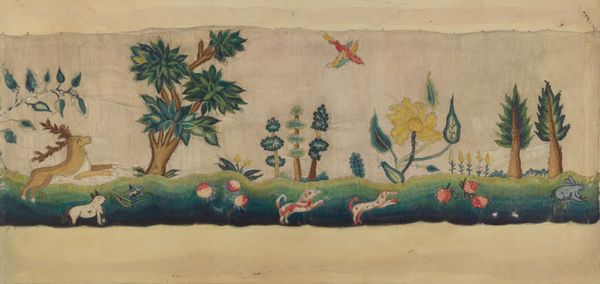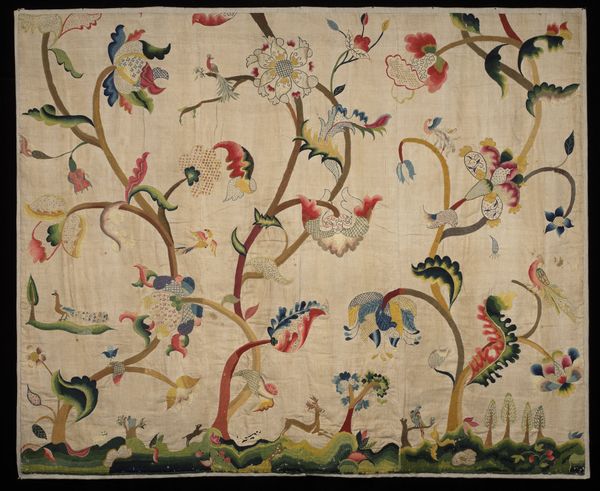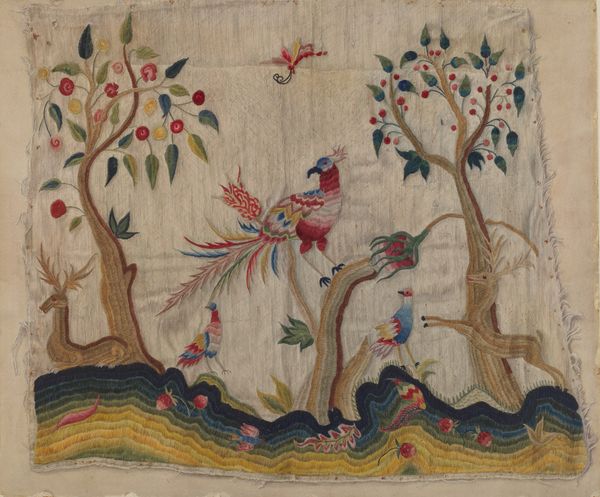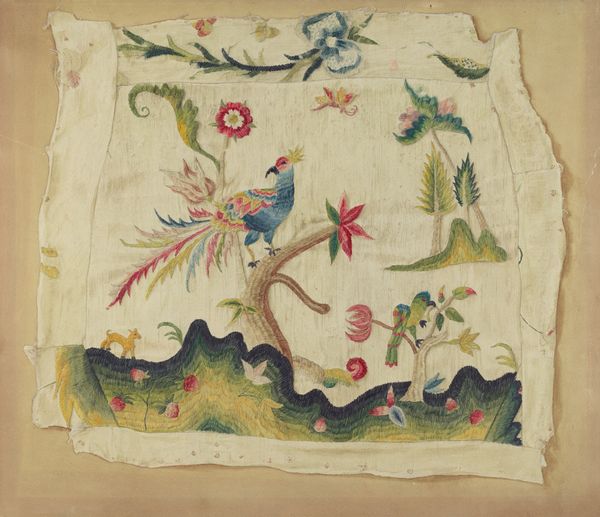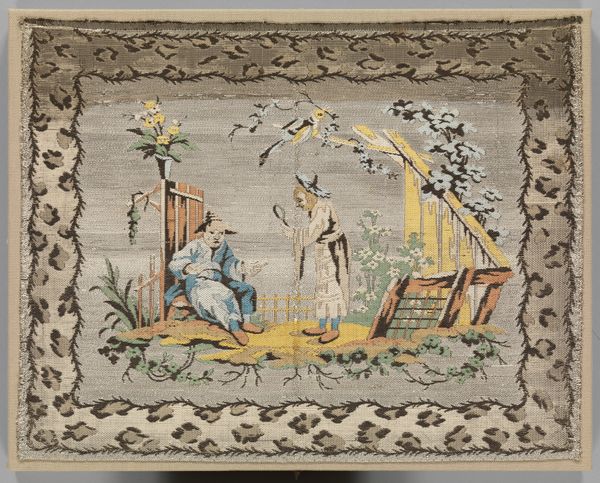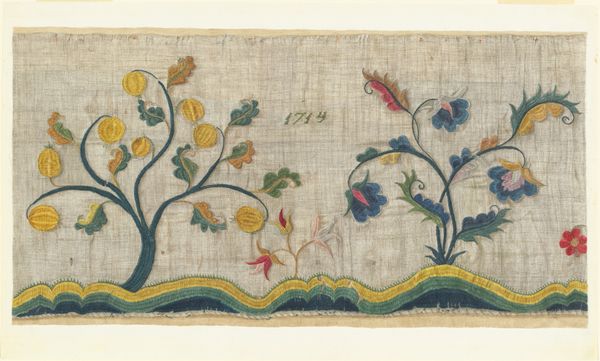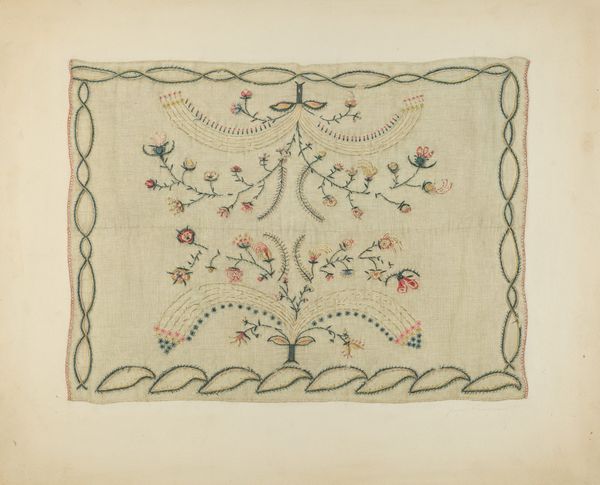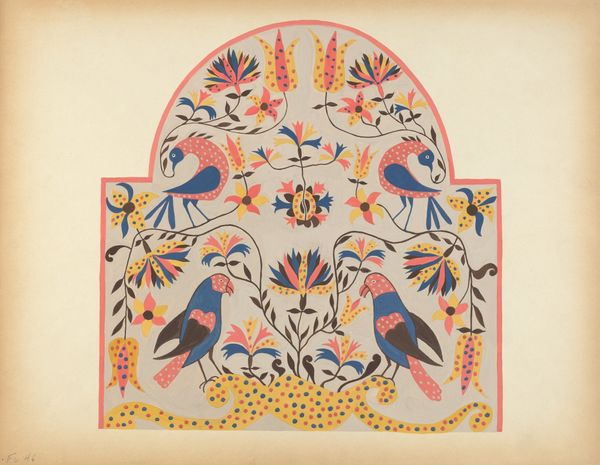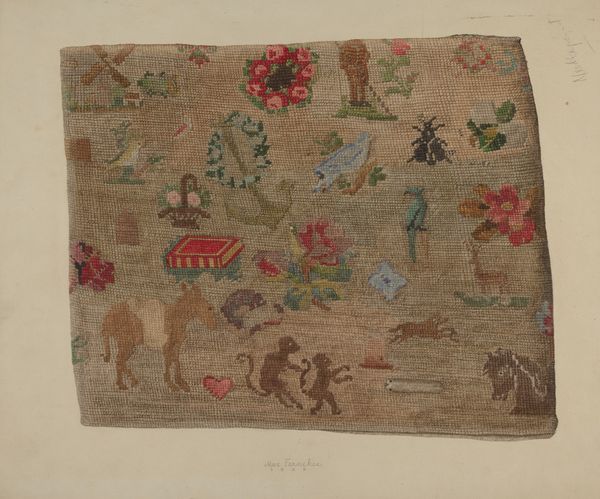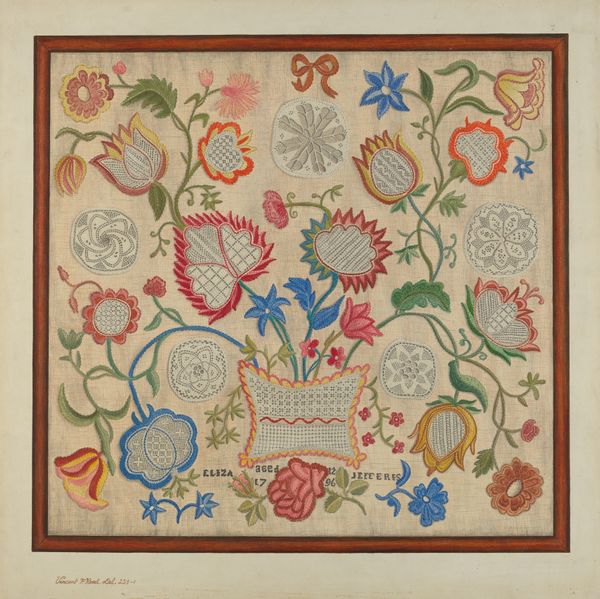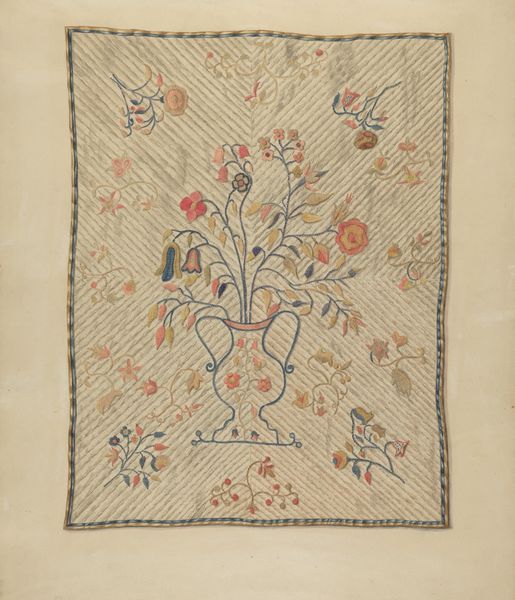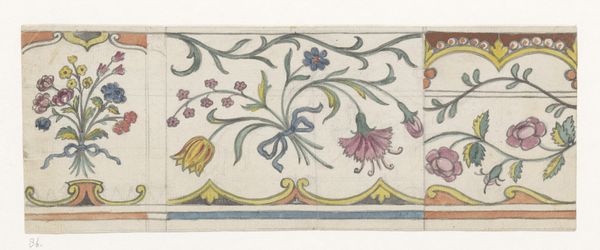
drawing, coloured-pencil, tempera, watercolor
#
drawing
#
coloured-pencil
#
water colours
#
tempera
#
watercolor
#
coloured pencil
#
watercolour illustration
#
watercolor
Dimensions: overall: 43 x 57.4 cm (16 15/16 x 22 5/8 in.)
Copyright: National Gallery of Art: CC0 1.0
Editor: This is a "Crewel Embroidery Chair Seat" created around 1936 by Eleanor Cunningham. The piece employs diverse media, including drawing, colored pencil, tempera, and watercolor. The fantastical scene evokes a feeling of serene whimsy, almost like something out of a storybook. What symbolic elements do you recognize? Curator: The overarching image gives a sense of an idyllic "golden age" of harmonious relations between humans, animals, and nature. Note the inclusion of animals such as the peacock, deer and rabbit. The peacock can symbolize pride, beauty and immortality; the deer represents gentleness and regeneration; while the rabbit is an emblem of fertility and good luck. Their presence here implies a deeper longing for innocence and connection. Editor: That's interesting, especially with the deer representing gentleness! I'm accustomed to reading that animal's antlers as a sign of virility or masculine power, perhaps because of their visual similarity to tree branches. Curator: True, antlers are a symbol for virility. However, here it presents as calm instead of bold assertion because its gaze faces down as it rests. Now consider how the artist used trees. Can you notice any symbol carried on? Editor: I see two trees, one barren and another flush with foliage and fruit. Could those represent different stages of life, like youth and maturity or even life and death? Curator: Precisely! These elements form a dialogue, inviting reflection on our own place within this constructed paradise. What do you think the viewer in 1936 thought? Editor: It does seem particularly poignant considering it was created during the Great Depression. Maybe this vision of harmony and bounty was a form of escapism or perhaps even a call for a return to simpler values rooted in nature. I learned so much! Thanks! Curator: And I as well. The intersection of personal vision and collective memory shapes how symbols endure.
Comments
No comments
Be the first to comment and join the conversation on the ultimate creative platform.
